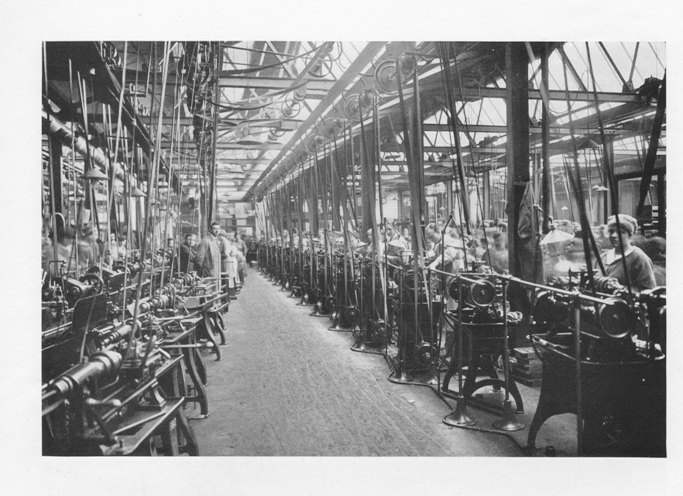George Kent's factory
Download Files Here
Current Location
Related items
Classification
Source

George Kent Ltd, meter manufacturers opened premises in Luton in 1908 and by 1914 employed 450 male workers. Within a few days of the outbreak of war they offered to assist the government in the production of armaments. By 1918 they had 8000 mostly female employees on two sites and were producing 140,000 shell fuses per week.
Towards the end of 1914 it became evident that the Government Ordnance factories were unable to cope with the demand for munitions and the help of outside manufacturers was sought. Kent’s were asked to undertake the manufacture of a shell fuse. An extension to their factory at Biscot Road, Luton was built for this purpose and within four months from the time building work started they were producing finished fuses. Expansion continued and eventually the site employed 5000 workers producing twelve different kinds of fuse.
In 1915, the firm was asked to build, staff and manage a National Filling Factory to fill the fuses and detonators with high-explosive. A 28 acre site at Chaul End was chosen as it was outside the built-up area of the town and was close to the railway.
Approximately 3000 workers – 80% of them women known as munitionettes- worked at Chaul End on continuous day and night shifts until the end of the war. It was a dangerous undertaking and there were several fatal accidents which are recorded on the George Kent Roll of Honour. The women who worked with TNT found that the substance turned their hair and complexions yellow and they were known in the neighbourhood as “Kent’s Canaries”.
Large numbers of the female personnel came in from surrounding towns and villages and since transport was difficult, hostels were provided to house them. The top floor of Blundell’s department store, the YMCA and several private houses were rented for this purpose. Miss Edith Hammond was responsible for the recruitment and welfare of the female workforce and was later awarded an MBE for her services. A canteen, rest rooms and sick bay was provided on site and there was a volunteer ambulance service and fire brigade.
During 1916, the company was having difficulty obtaining supplies of brass due to the danger of U-boats and so the company built a foundry and stamp mill to melt down and re-use all the brass swarf from the factories. This area was also staffed entirely by women with the exception of the manager.
The important munition work being done by Kent’s was clearly recognised by the Ministry and Sir Walter Kent was appointed Chairman of the Fuse Manufacturers Association. On November 13th 1917 the works were visited by King George V.
Object Location
Author: HillC








Add comment